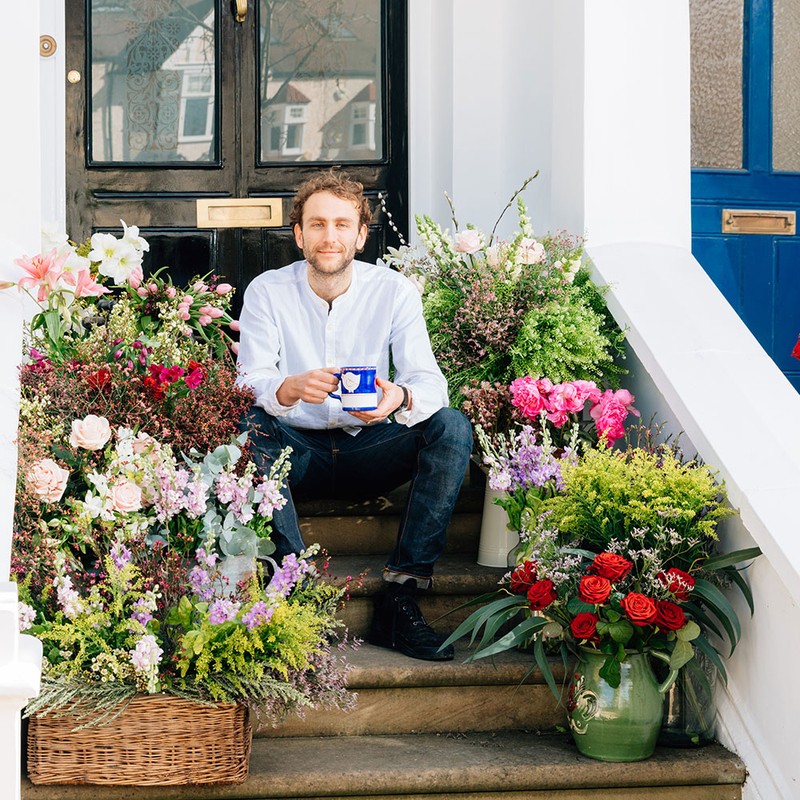The Man Behind The Brand: Freddie’s Flowers
Your parents were florists – were flowers always your plan?
Despite the fact that my dad owned a flower shop in Pimlico and my mum was a florist, flowers were never my plan. University wasn’t a great success for me. I did a very bad degree, Popular and World Music at Leeds, which was the greatest waste of time so when I left university I thought I was in serious trouble. I spent a year doing not very much until I got a job at the organic food and vegetable delivery company Abel & Cole. I was tasked with going around London knocking on doors and seeing if people wanted to buy boxes of organic vegetables. The founder, Keith, was looking for a group of people to reinvigorate and start up a face-to-face sales team and I was one of those. Fortunately I was good at it; I knew how to talk and sell to people from a doorstep, and I really enjoyed the interaction between seller and customer. After a year or so, I thought I could do this myself, so I took the leap and left to start up Freddie’s Flowers.
Where did the idea come from for Freddie’s Flowers?
I knew how much people loved flowers from my time spent in my parents’ shop, but I also knew they were seen as a luxury product, an extravagance, and something that you would rarely buy for yourself. Flowers from a florist are expensive. I wanted to challenge that and try and make them a good-value product, something much more affordable.
How did you get it all going?
I moved out of my flat in Brixton and into my parents’ house in Wandsworth to start the business. I spoke to Keith, who by that point had just left Abel & Cole. He was really supportive and loaned me a small amount of money to get the business started. With that first cash influx, I bought a milk float to do the flower deliveries in; a tent which I erected in my parents’ garden and where I planned to do the flower arranging; and I bought a load of cardboard boxes which I thought would be roughly the right shape and size to send the flower arrangements in. I designed an A4 piece of paper with a sketch of some flowers on it, and went out on the Monday and Tuesday of that first week with this piece of paper, knocking on doors in Wandsworth. My sales pitch was very simple: do you want a regular weekly delivery of flowers? I managed to get four people on that first night, four the following night and then two the next one until I had my first ten deliveries in place for Friday. Then it was a case of going to the flower market at 3am in the morning to choose the arrangement so that I could make those first 10 deliveries in time for Friday.
Slowly I got more people helping doing the face-to-face sales. My brother Ed and some of his friends who had finished uni were at a loose end, so I employed them to help with the ring-rounds. My mum was the most helpful at that stage because what started as one Friday delivery of flowers quickly became a Tuesday delivery and then a Wednesday delivery too, so I needed help with the early flower-market mornings, packing the boxes in the garden in the tent, and so on.
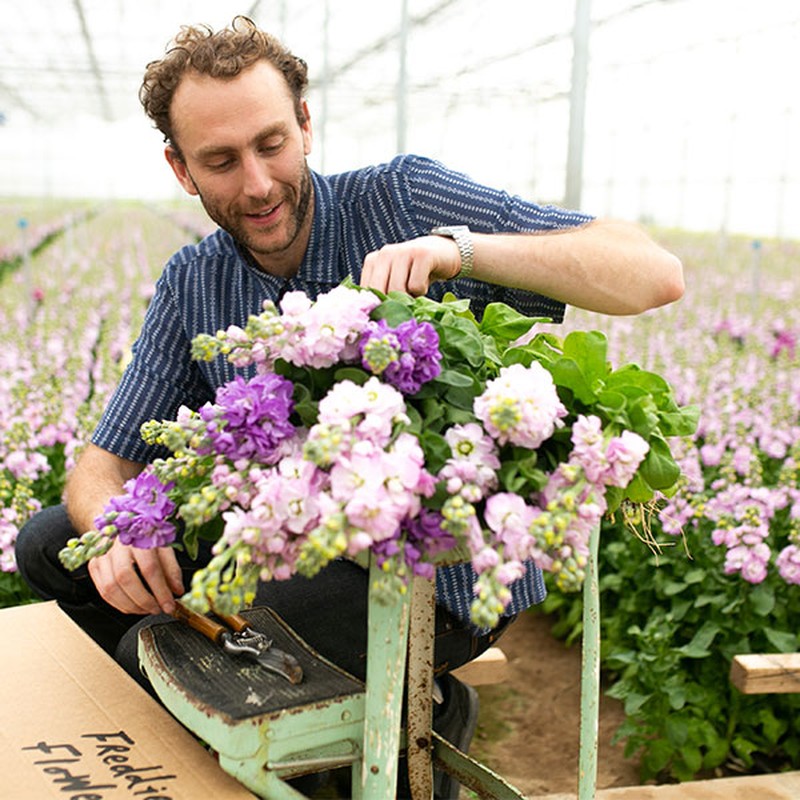
Talk to us about marketing, how did you get your first customers?
Every single customer of the first two years was brought through face-to-face sales, from simply knocking on doors. I think in part we were lucky that we approached nice people who were keen to commit to a new company. We had a compelling story and a cracking product, and people were excited to help a small, local start-up. To begin with, we would deliver the flowers and not take payment then and there. We’d call up after a delivery, making sure they were happy with the product and only then would we ask for payment. And this approach worked well for us.
Were you stood at their doorsteps with examples in hand?
No, not at all. I remember very clearly knocking on my first door with a laminate piece of paper which read ‘Freddie’s Flowers’ with a photo of a bunch of flowers I had taken in my parents’ garden. I had another piece of paper with spaces for customer name, first delivery date, address, email address, phone number and card details on it – and that was it! The mistake I made at first was saying to the first-ever door I knocked on, “Hi there, I’m from Freddie’s Flowers….” which made the business sound a lot bigger and more established than it was. I quickly learnt the best way to get someone’s attention on their doorstep was not to say I was from a large company, rather to say, “Hi, I’m Freddie and Freddie’s Flowers is my new business. Would you be interested in receiving a weekly delivery of flowers?” That honesty was, and still is, key.
Tell us what the business looked like in the early days. How much were you doing day to day?
The first six months were relentless 100-hour weeks. I would get up at 3am to go and collect the flowers, bring them home, prepare them so they looked arranged and worked well together, ensuring they were packaged correctly and still looked beautiful when they were unboxed. Then there was the physicality of loading them into the van, then the delivery process, which was a five or six-hour round. Once that was done, I would head back out in the evening, knocking on doors to get the next sign up of customers.
Those early days were hard. I remember very vividly having a nervous breakdown on the side of the road in Kensal Rise, thinking, ‘What am I doing? Have I made the right decision?’ It was about 6pm and I had about 20 deliveries still to do, and I was feeling very lost. But you’ve got to keep going, and what kept me going was this drive to ensure my customers were happy.
That is the one thing I have learnt and would argue above everything else: the customer in any business is always right. If they email you with a query, you must immediately address the query and get back to them with an action: for example, if they don’t like the flowers you’ve delivered, you get them new flowers. There is just no two ways about it. You do everything in your power to keep them happy.
How did your brand aesthetic evolve?
We had a very organic start because we had the opportunity to speak directly to our customers and ask them what they would look for in terms of branding and what would catch their eye. We were able to develop the brand from that feedback. The concept of the brand wasn’t present until recently, so we’ve almost worked backwards in that sense. Customers said they loved how we were personal, approachable and friendly, so we wanted to make sure our branding reflected that. The logo came two years in and really leant on this idea of approachability.
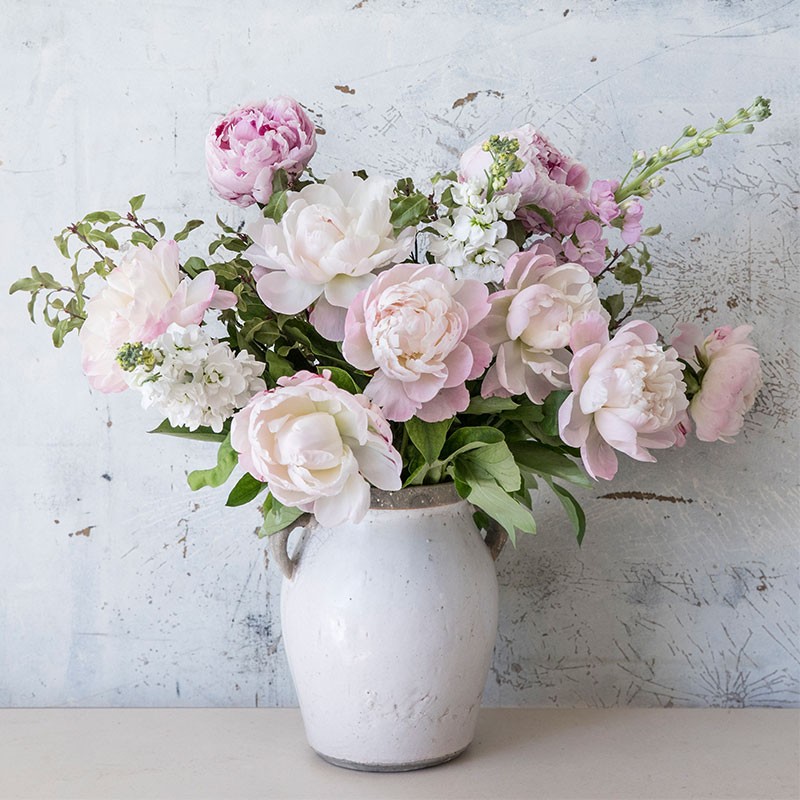
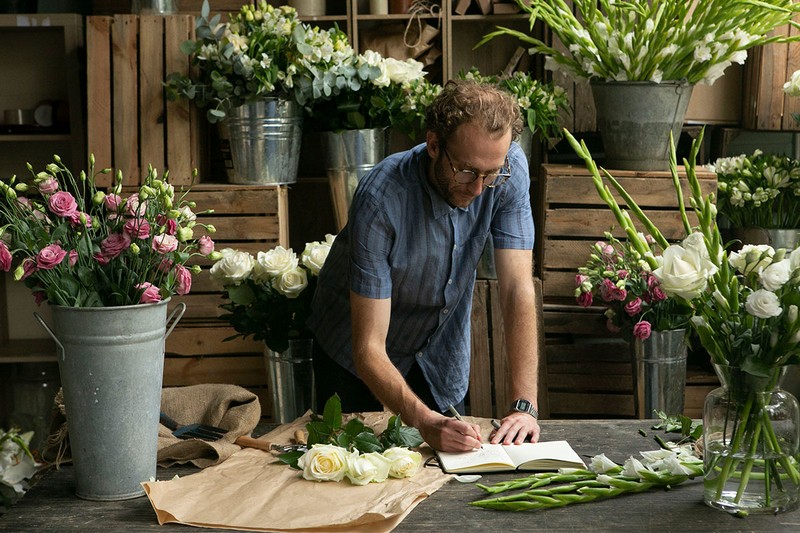
Talk to us about growth and where you are today…
We’ve gone from me in my parents’ garden doing the first ten deliveries on my own to now having 65,000 customers and doing roughly 22,000 deliveries a week with a team of over 120. From the beginning, what has driven the company is a clear understanding of what the product is: one box of flowers. We’re still just delivering one box a week. Every customer gets the same thing. I design an arrangement which every single person receives, so there is no confusion as to what goes where. This also means the quality of the flowers remains high; all our creative energy goes into making that one arrangement the best it can be. It also means there is very little waste, I am able to plan with our flower growers because I know that in a Christmas week, for example, when we are doing an arrangement with the popular amaryllis flower, we know exactly how many boxes we are going to do to the nearest 100. One thing I saw in my dad’s florist was the amount of wasted product because you never know how many customers you are going to have. I really wanted to avoid that.
And are you making a good living?
We are profitable before marketing and, while we are breaking even now, we predict that next year we will be profitable including marketing, which is really exciting and something I am very proud of after only five years. At the moment, all of the profits have gone back into the company, specifically into marketing. Like in any new business, there have been lots of false peaks, when you think you might be profitable but you’re not, so it’s great to no longer be in that position.
What was your initial investment and where did it come from?
The only investor I have had is Keith Cole. After his initial loan in the first year of Freddie’s Flowers, he decided to come on board as a partner and invested in the company more heavily. I was lucky in that I was immediately getting customers, so I was immediately generating some sort of an income.
Why a subscription service?
The nature of a subscription business model means we can forecast the numbers much easier. We know how many customer orders we have coming up and how many flowers we are going to need to fulfil that number so we can be really accurate when we’re buying which minimalises waste massively. For me, having a flower subscription business makes sense.
Flowers by their very nature are changeable and often the reasons they are so expensive to buy from a florist is because they have been shipped in from somewhere or you’re paying a premium on something which has been grown out of season. With a subscription model we can create seasonal bouquets at lower cost because we are able to source them locally or if we are looking further afield, we can anticipate that. For the customer using the service- it is convenient, it is great value and it’s fun, everyone loves getting a parcel and one with flowers in is a win-win!
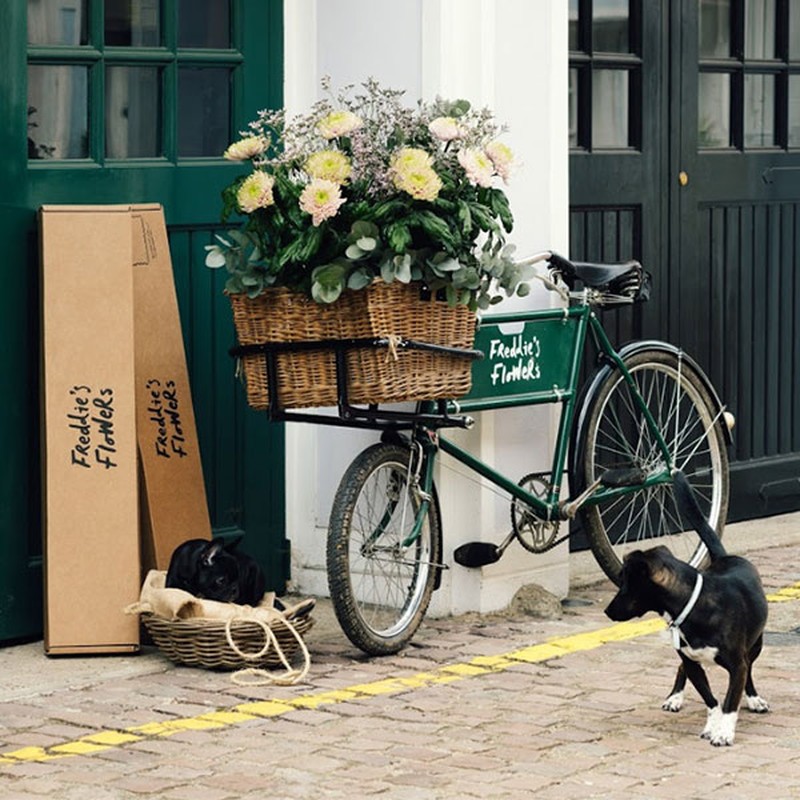
Flowers are a very volatile product, what have been your biggest challenges?
The weather is – and always will remain – the biggest challenge. The unpredictability and the stress associated with that has lessened slightly now that the company is a bit older. I have established really solid relationships with growers, so when bad weather has ruined a crop of flowers, it is much easier to rectify because I know who to go to for help and I can trust they will give me a worthy replacement.
What would you say has really helped the business grow?
Word of mouth has been huge for us. We have a team of 20 butcher bikes based across London which are really recognisable as Freddie’s Flowers bikes because of the flowers in the baskets. We employ actors and creative people who are confident and fluent in approaching potential customers. Essentially it is the people out there, whether that is employees or friends of friends, talking about the brand which has helped our growth. If a customer recommends three friends, their friend will get a free first box and that sort of marketing strategy has also really helped.
Social media hasn’t been an area of huge focus for me; at least it wasn’t in the beginning. Floristry is so oversaturated on social media and, while there have been some amazing success stories, we are much more old fashioned. I really wanted to bring the story of the brand and of our growers to the doorsteps of the people subscribing, and I just don’t think you can do that as effectively using social media.
What are the plans for Freddie’s Flowers in the next five years?
We are going to Europe next year and also the US, which is really exciting. We will be offering the same subscription service, with the same company values. We are starting in Belgium, which is an easy expansion for us because we have lots of growers in the nearby Netherlands. Antwerp is a great cultural hub, so I am really excited to see how the brand does there.
Finally, would you do it all over again?
Yes! It has been one of the greatest experiences. No doubt it has come with stresses, but I love it and I still feel as engaged with the customers today as I did five years ago standing at my first door.
For more information, visit FreddiesFlowers.com
DISCLAIMER: We endeavour to always credit the correct original source of every image we use. If you think a credit may be incorrect, please contact us at [email protected].
